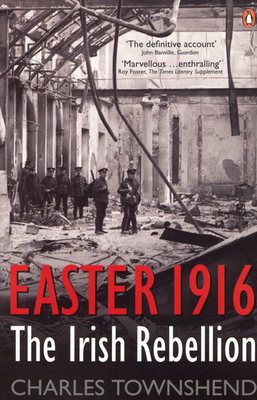Easter 1916
Peter Berresford Ellis review Easter 1916: the Irish rebellion by Charles Townshend, Penguin, ISBN 0141012161, £8.99 pbk

PROFESSOR TOWNHSEND commences his study with a comment by Bulmer Hobson on Diarmuid Lynch's 1956 essay on the 1916 insurrection: "I have no wish to deter Mr Lynch from getting his particular distortion published." I would echo that sentiment.
The only thing that differentiates Townshend's account from many works that have gone before is, of course, that he is able to utilise the records from the Bureau of Military History. Between 1947 and 1957 the BMH gathered 'witness statements' from participants in the uprising and subsequent War of Independence. The Irish government put a block on access to these accounts, for obvious reasons, and it was only in March, 2003, that they were opened to the public.
But such material is only as good as the bias of the historian using it. I feel that access to these personal accounts was an opportunity missed.
Because of the source references, I cannot of course disagree with the notion that this is an important contribution. But only in its use as a tool for other historians looking for a short cut to references. There is no way I can agree that it is "the most full and objective account of the Irish Rebellion (sic) so far".
The subject of 1916 still awaits an historian without a political axe to grind - if, of course, there is such an animal. As Napoleon once said: "What is history but a myth agreed upon?" Like witnesses at a traffic accident, we all have our view of what exactly took place and who can blame Townshend for choosing his side?
However, some of his flawed analysis is based on ignoring source material and making assumptions.
In my column in the last issue of the Irish Democrat, I have already demonstrated one flawed analysis in this book where, on p. 102, the author discusses the military plans for the insurrection and criticises the decision to seize the GPO as headquarters instead of 'symbolic' Dublin Castle. This discussion alone demonstrates that the author is not cognisant of all source material, especially from British sources which demonstrated why the GPO was of central importance to the insurrection as well as British control in Ireland.
Blithely, the author then goes on to criticise the military plans of the 1916 leaders and their "apparent unconcern with some of their city's most striking topographical features". A statement like that takes one's breath away when one considers the reckless abandon of the British military forces using artillery in the city and, of course, the warship HMS Helga steaming up the Liffey to level whole sections of the city with her guns.
Presumably the military planners of 1916 were not alone in their "apparent unconcern" and while the British forces were not only unconcerned with the city's "most striking topographical features" they were also unconcerned about the lives of the city's civilian population when they unleashed their artillery. .
Connolly Association, c/o RMT, Unity House, 39 Chalton Street, London, NW1 1JD
Copyright © 2006 Peter Berresford Ellis

